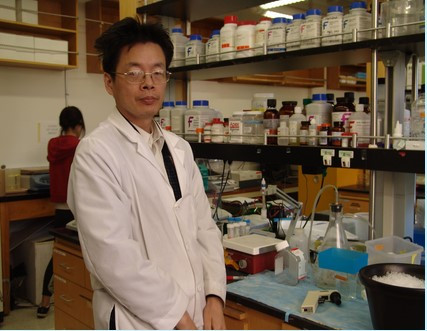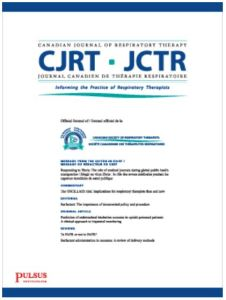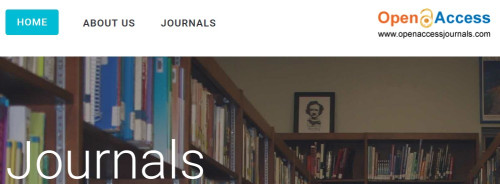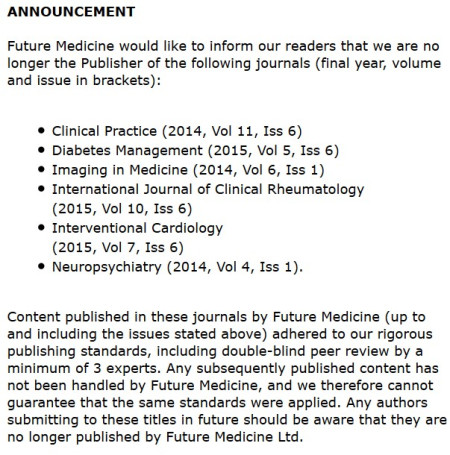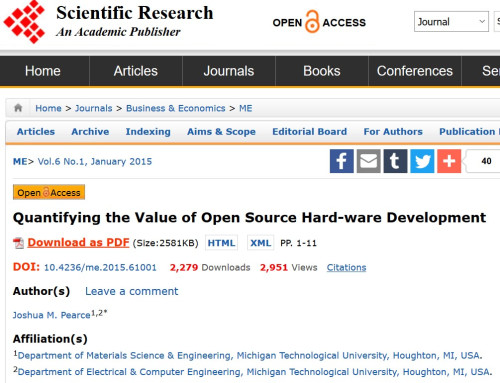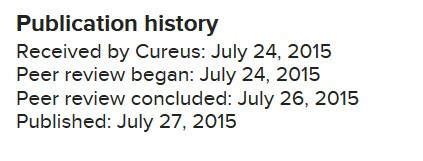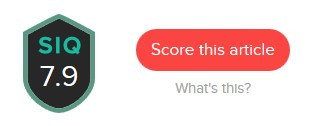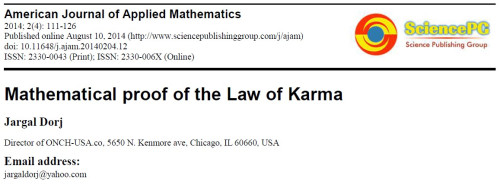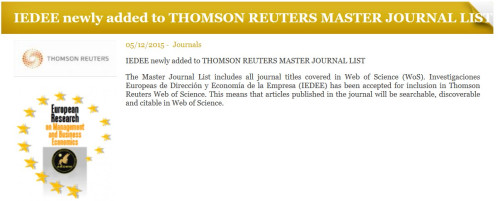Allied Academies: Bad Business Decisions, Misdirected Blame, and a New Name
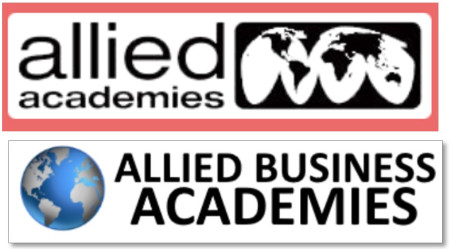
The owners of Allied Academies have made some truly incompetent business decisions, including associating with the notorious Indian publisher OMICS International — which is freely using Allied Academies’ name in its business dealings. You may have heard that OMICS is currently under investigation by the Federal Trade Commission.
The owner of Allied Academies refuses to take responsibility for the mismanagement and is distributing an “open letter” that basically denies responsibility for the sorry state the publisher is in and blames me for damaging its reputation. This accusation is unprofessional and false.
The letter says,
As you may have heard, Allied Academies was added to Beall’s list of possible predatory publishers earlier this year. Without going into too many details, Jim Carland, [sic] signed a contract with a publishing company last year that was offering to give us website and copyediting support. That contract enabled them to post other journals to the Allied website, which we did not think would be an issue. Most of the newly added journals are in the field of science, which we thought would give Allied Academies a broader appeal. However, most of these newly added journals are open access, and Beall’s list consists of open access journals that employ a specific type of publication process that he deems to be unethical.
Here the publisher is being non-transparent and only telling half the story. Allied Academies stupidly signed a contract with OMICS International, a known predatory publisher. Why did they sign a contract with OMICS? Because it benefitted them financially. What respectable publisher would knowingly agree to let a predator add journals to its website?
The letter continues:
In the meantime, Beall’s list has created some permanent damage to the name Allied Academies, and we are contractually obligated to keep the open access journals on that site. Therefore, we have created a new site to move the business journals to: Allied Business Academies.
They blame me for the incompetent business decisions. If any publisher should be able to make competent business decisions, it is a publisher of scholarly business journals.
So Allied Academies’ “solution” is to create a new branding (Allied Business Academies) and a new website for its original journals. The publisher now has two websites:
o Allied Academies = http://www.alliedacademies.org/
o Allied Business Academies = http://www.alliedacademies.biz/Public/Default.aspx
Allied Academies was never a top-tier publisher. In fact, over the years, I have regularly received emails asking me why it wasn’t on my list and suggesting that I add it. However, its journals weren’t open-access, so I resisted (the OMICS journals on the site are OA, and after they appeared there I added Allied Academies to my list. This was in December, 2015).
Here are some of Allied Academies long-term weaknesses (before their affiliation with OMICS):
1.Coercive membership: According to their website, “All authors of manuscripts which are accepted for publication must become members of the appropriate Academy prior to publication of the manuscript. Membership fees are currently $75 per year, payable online at the Join an Academy page.”
2.The publisher offers a fast-track peer review option:
To be eligible for Accelerated Journal Review (AJR), at least one author must have registered for physical or Internet participation in one of our four regularly scheduled Conferences each year. Instructions for Accelerated Journal Review submission are emailed to Conference registrants when the registration fee is paid.
3.Like the Clute Institute, Allied Academies holds its “conferences” in popular tourist spots. In fact, its next three scheduled conferences will be in these places:
Las Vegas
Jamaica
New Orleans

OMICS’ Use of Allied Academies’ Name to Offer to Buy Other Publishers and Journals
OMICS is using the Allied Academies name to make offers to buy other journals. Here is an email following up on one such offer, with the victim journal’s identifying information redacted:
——– Forwarded message ——–
RE: Proposal for “[Redacted]”
Date: 2016-09-26 [Time redacted]
From: Kevin Jace
To: [Redacted]
Dear [Redacted],
Greetings!
Thanks for getting in touch with Allied Academies!
I am Kevin Jace writing to you on behalf of Allied Academies. Our executive Mr. Peter, with whom you are in communication earlier has left the organization and had passed on all the responsibilities to me which he used to take care. So, from now on I will be the authorized person to take this conversation further.
We are happy to see you get interest inclined towards this collaboration. I am now elaborating the brief proposal with which ALLIED ACADEMIES appeared along with the benefits that it carries. Kindly go through its content below:
Complete Acquisition:
On opting this: The entire ownership of the journal will be transferred to Allied Academies after which the entire responsibilities of the journal will be taken care by Allied Academies.
To gain entire ownership on the journal, our evaluators will look after few key parameters.
Key parameters:
o Indexing of the journal
o No. of volumes
o Publication start year
o Scope of the journal
o Total no. of articles published.
After evaluation, Allied Academies would pay a fixed royalty amount as a onetime payment for its complete acquisition (including the website in which the journal is being hosted).
Benefits after post acquisition:
o [Redacted] will gain support of extensive network of readers/authors that cling to Allied Academies.
o Definite increase in quality work as Allied Academies follows a stringent peer-review process giving the quality its first priority.
o Huge and strong marketing network of Allied Academies will help in enhancing the visibility of the journal globally.
o Promotion of the journal through Allied Academies’ marketing activities.
o Promotional activities through conference partners.
o Use of Editorial Manager tracking system for smooth running of the journal.
o Protection of the journal from plagiarized manuscripts
o Support and encouragement of millions of readers around the globe.
o Quality oriented team work and better visibility of the journal.
o Allied Academies would strive for better indexing of journal along with its maintenance and it’s up gradation.
Additional benefits:
o We will conduct editorial board meetings; special discounts to staff and editorial board members of the journal to attend the conferences.
o Conferences organized on the specific journal topic.
o Special issues released periodically.
In addition to this we will promote your website on the journal homepage.
Editorial board details:
The editorial board remains the same. For the betterment and global expansion of the journal we may add few more editors to the editorial board. It is to the discretion of the existing board members to remain with the board or not.
We coin some special issues for the journals and Editors have a benefit to earn about 25% of the revenue generated on the special issues for those articles which are contributed by the editors i.e., based on their contributions we pay them 25% share from the amount generated.
If you are interested in selling the journal to us, I shall soon come up with the price for complete takeover along with the website on which the journal is being hosted. On mutual terms agreed by both the parties, we shall draft and send the agreement to you. The agreement which is send to you should be duly signed by the owner of the journal. Once the agreement is signed, we will be paying you 20%-30% of the amount as a part of first tranche and remaining should be paid once we receive all the archives, Website credentials etc. as a part of second tranche. It solely depends on how fast you will send the files to go for remaining payment.
Please feel free to write to me if you have any further queries.
I will be glad to receive a positive response from you.
Thanks & Regards,
Kevin
This is the same strategy OMICS International used in Canada this year. It bought a publisher and then made subsequent offers to buy journals using the publisher’s name. The reputation of OMICS is so bad that it has to hide itself to do business with other publishers.
Conclusion
Referring to the Allied Academies’ journals, the open letter states:
They continue to be double-blind, peer reviewed and now have an acceptance rate of 15%. The journals have actually had a 15% acceptance rate on average for the last few years and we neglected to update it until now.
For years, Allied bragged that its journals had the same acceptance rate for all its journals: 25%. Now, they are claiming that the acceptance rate for all journals has magically dropped to 15%.
This is pure bunk. It is statistically impossible for an entire suite of journals to have the exact same acceptance rate and for that rate to drop to 15% simultaneously for all journals.
Who do they think they are fooling?
By: Jeffrey Beall
Follow on Twitter
Source: Scholarly Open Access
Comments:
Derek says:
October 11, 2016 at 10:16 AM
I agree that Allied Academies is a questionable publisher, to say the least. However, with regard to “Coercive membership”, I don’t think this is uncommon for even legitimate professional associations. For example, the Canadian Journal of Economics requires that at least one author be a member of the Canadian Economic Association when submitting a paper: http://economics.ca/cje/en/submissionfee.php I have also seen associations give a submission fee discount for members equal to the cost of joining, which amounts to the same thing (you might as well join and get the journal).
Batuhan Akben says:
October 13, 2016 at 3:25 AM
I have submitted some manuscripts to Biomedical Research Journal published by Allied Academies. They have rigorously evaluated by reviewers. Even, some of them have been rejected. Reviewing period is about 2-3 months. Publishing period is about 4 months after acceptance. In addition, acceptance rate of the Biomedical Research is about 15% (I think it is not high). If they publish the articles for only money the publishing period would not so long. So, I can say that the Biomedical Research Journal is quite quality.
You made all of Allied Academies Journals suspicious by adding only publisher name in to your list. I think you should list the suspicious journals of Allied Acadimes instead of publisher name.
Philip says:
December 6, 2016 at 8:37 AM
While I have no love for OMICS, this blog is clearly written in a way that manipulates the reader. For example, the Allied Academies letter states that “The journals have actually had a 15% acceptance rate on average” but the blog author then says “It is statistically impossible for an entire suite of journals to have the exact same acceptance rate”. That statement twists what the letter said. Saying the journals have an AVERAGE of 15% doesn’t mean that all the journals individually have a rejection rate of 15%. There’s lots of other examples of misleading statements in this blog. If you want to fight predatory publishers, don’t stoop to their level by being misleading and manipulative in your own blog.


